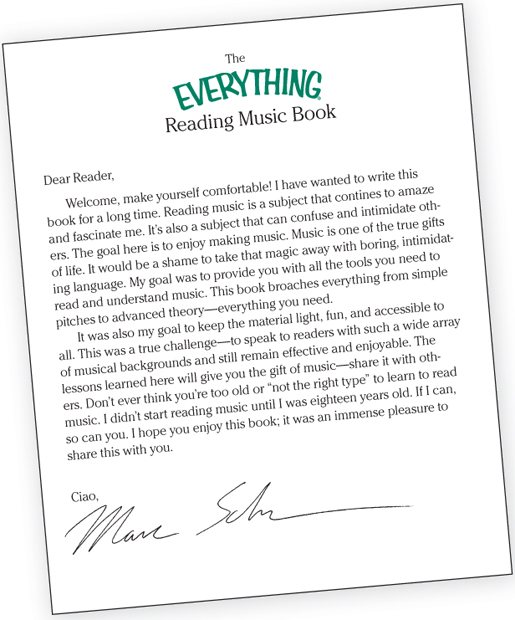
The EVERYTHING Series
| Editorial |
| Publishing Director | Gary M. Krebs |
| Managing Editor | Kate McBride |
| Copy Chief | Laura M. Daly |
| Acquisitions Editor | Gina Chaimanis |
| Development Editor | Karen Johnson Jacot |
| Production Editors | Jamie Wielgus |
| Bridget Brace |
| Production |
| Production Director | Susan Beale |
| Production Manager | Michelle Roy Kelly |
| Series Designers | Daria Perreault |
| Colleen Cunningham |
| John Paulhus |
| Cover Design | Paul Beatrice |
| Matt LeBlanc |
| Layout and Graphics | Colleen Cunningham |
| Daria Perreault |
| Sential Design |
| Series Cover Artist | Barry Littmann |
| Interior Illustrator | Marc Schonbrun |
Visit the entire Everything Series at www.everything.com
THE EVERYTHING
READING MUSIC BOOK
A step-by-step introduction to
understanding music notation and theory
Marc Schonbrun
 Adams Media
Adams Media
Avon, Massachusetts
This book is dedicated to Joseph MooneyEverything I know about music, you taught me. Thank you for the gift of my musical life.
Copyright 2005, F+W Media, Inc. All rights reserved.
This book, or parts thereof, may not be reproduced in any form without permission from the publisher; exceptions are made for brief excerpts used in published reviews.
An Everything Series Book.
Everything and everything.com are registered trademarks of F+W Media, Inc.
Published by Adams Media, a division of F+W Media, Inc.
57 Littlefield Street, Avon, MA 02322 U.S.A.
www.adamsmedia.com
ISBN 10: 1-59337-324-4
ISBN 13: 978-1-59337-324-5
Printed in the United States of America.
10 9 8 7 6 5 4 3 2 1
Library of Congress Cataloging-in-Publication Data
Schonbrun, Marc.
The everything reading music book / Marc Schonbrun
p. cm. (An Everything series book)
Includes bibliographical references.
ISBN 1-59337-324-4
1. Musical notation. 2. Sight-reading (Music) 3. Music theory
Elementary works. I. Title. II. Series: Everything series.
MT35.S35 2005
781.423dc22
2005009550
This publication is designed to provide accurate and authoritative information with regard to the subject matter covered. It is sold with the understanding that the publisher is not engaged in rendering legal, accounting, or other professional advice. If legal advice or other expert assistance is required, the services of a competent professional person should be sought.
From a Declaration of Principles jointly adopted by a Committee of the American Bar Association and a Committee of Publishers and Associations
Many of the designations used by manufacturers and sellers to distinguish their products are claimed as trademarks. Where those designations appear in this book and Adams Media was aware of a trademark claim, the designations have been printed with initial capital letters.
This book is available at quantity discounts for bulk purchases.
For information, please call 1-800-289-0963.
Contents
by Dr. Paul Siskind
A cknowledgments
I need to thank: My familyMom, Dad, Bill, Trish, and David. Doug Rubio, Paul Steinberg, Bret Zvacek, and David Heinick at The Crane School of Music for my wonderful education. Paul Siskind for his foreword and insightful comments. Frank Feldman, Eric Starr, and Kelly Moran for adding their talents to the audio CD. Steven Powell for the helpful KidSib font. Ron James for the Illustrator help. Sibelius software for perfect music notation software. And last, my patient wife who has endured yet another crazed husband writing a book phase: Without her help and support, I could not do this.
*CD Mastered by Barry Diament Audio, New York.
*No real pianos were harmed making this CD. (Not that I didn't try.)
Top Ten Things You Will Learn
From Reading This Booh
1. How to read pitches, sharps, flats, and naturals.
2. How to read notes in every clef.
3. All about meter, key signatures, and time signatures. 4. How to count and subdivide rhythms.
4. How to interpret symbols and instructions in a score.
5. How to spell major, minor, harmonic, melodic, pentatonic, blues, chromatic, whole tone, diminished, and modal scales.
6. How to spell any chord or arpeggio imaginable.
7. Chord progressions.
8. The transposing instruments and how to transpose.
9. How to read a lead sheet/chord sheet.
Foreword
There are many paths that can lead to becoming an accomplished musician. Some people are born with natural ability, while others have to work hard to develop their skills. Some styles of music require years of formal training; others invite participation by amateurs with little training.
Music reading is a skill that fits into this broad continuum in a variety of ways. In some musical styles, you don't need to be able to read music to enjoy participating or to become moderately successful. In other styles, the ability to read music is an absolute necessity. However, no matter what musical style you favor, an ability to read music can greatly enhance your skills, your enjoyment, and your chances for success.
At the most basic level, music notation is a language, a way of communicating musical ideas and instructions. It is a very efficient language, much more efficient than having to learn things by trial-and-error, by ear, or by rote memorization. It also allows musicians from different styles to communicate across stylistic borders.
But the ability to read music is not only a practical aid to becoming a better performer; it also helps you to appreciate music more by understanding the inner workings of music. Music notation opens the door to music theory, which is simply the study of how music is put together. Music theory forms the core of understanding that all accomplished musicians share, and you cannot really excel as a musician without some understanding of theory. But theory is not only useful to practicing musicians; an understanding of theory can greatly increase the appreciation and enjoyment that you get from listening to music.
My experience as a teacher has shown that musicians generally fall into one of two broad categories of innate learning approaches: experiential or cognitive. Experiential musicians tend to learn by doing; they first master a skill, and then later understand the concepts behind what they're doing. Cognitive musicians tend to do the opposite; they first learn the concepts of what they're trying to do, and this understanding helps them to learn how to actually do the skill. Either type of learning approach can lead to success as a musician, regardless of the musical style. But good musicians of any type learn to develop both the experiential and cognitive approaches, because neither approach is effective by itself; experience leads to deeper understanding, and understanding helps improve practical ability. Thus, no matter what your natural learning approach is, and no matter what musical style you enjoy, you will be a better musician if you work to improve both the doing and the understanding of music.
As a subject, music theory can seem to be a daunting puzzle to some people. My hunch is that this often occurs when a student who has a high predilection toward experiential learning is taught by a book or teacher that takes a highly cognitive approach (or vice versa); the difference of approach can lead to frustration. Because of this, beginning music theory can be a surprisingly difficult subject to teach. It can be hard for accomplished musicians who have developed both their experiential and cognitive abilities to get beyond their own natural abilities and understand the areas that might not come naturally to different students.
Next page
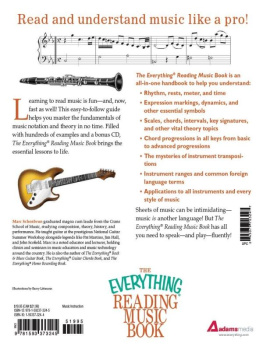
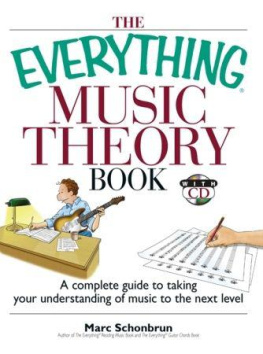
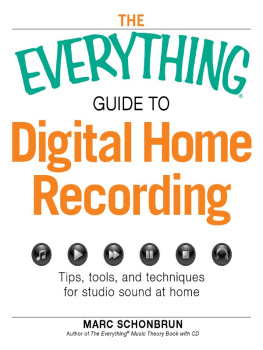
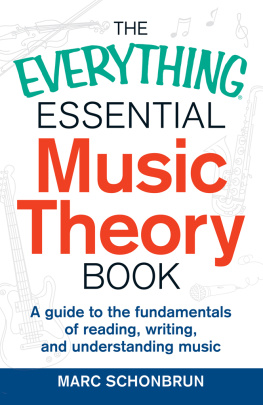
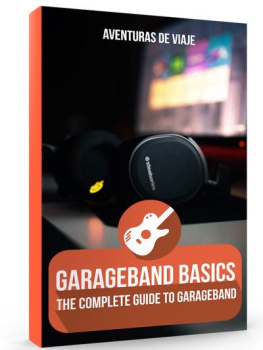
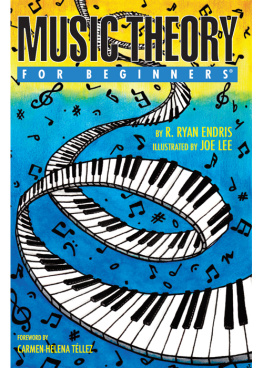

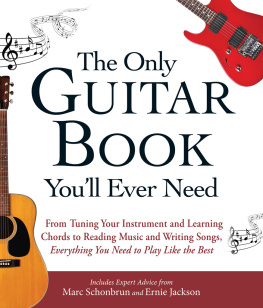
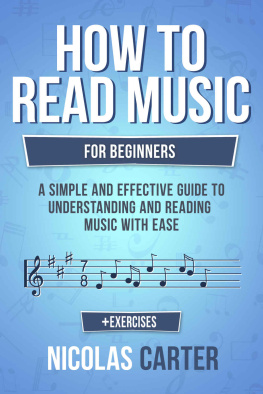
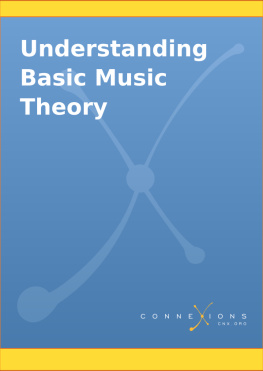
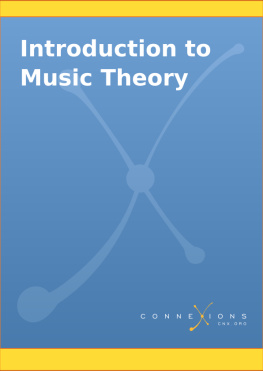

 Adams Media
Adams Media